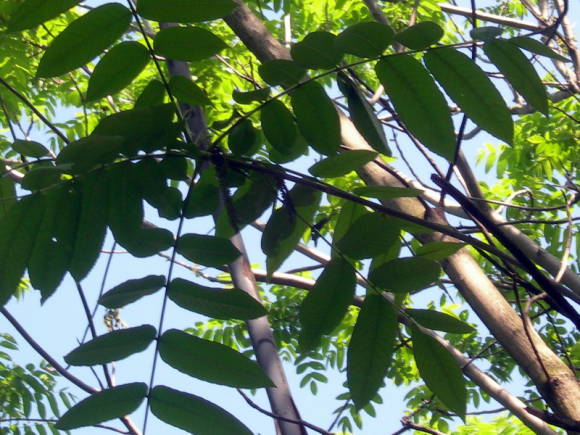Representatives of the velvet genus (Phellodendron) belong to the root family (Rutaceae). There are about 10 species in the genus, but the most interesting for us is the Amur velvet, or the Amur cork tree (sometimes it is called the velvet tree).

Amur velvet (Phellodendron amurense) - a dioecious deciduous tree up to 30 m high, most often up to 20-25 m, in the northern regions of its range it grows as a small tree. His crown is wide, spreading. The bark on young trees is light gray, while on old trees it becomes dark gray in color and becomes wrinkled, velvety, with a highly developed cork layer. On the inside, the bark is bright yellow, and the cork layer is light brown. One centimeter of cork grows (along the radius) on average over 50 years. But depending on the conditions, the duration of this process ranges from 32 to 72 years.
According to the bark pattern, trees are distinguished with lamellar, diamond-shaped or ash-shaped bark. Trees with ash bark produce the best cork, and those with lamellar bark are the most productive.
The leaves of Amur velvet are complex, odd-pinnate, arranged alternately, consist of 7-13 oval, pointed leaves and appear on trees in May. When rubbed, the leaves give off an unpleasant odor.
The velvet tree blooms in June-July, after complete foliage. Its flowers are dioecious. Small (up to 1 cm in diameter), greenish, with a double perianth. Corolla consists of 5-6 loose, green, later turning brown petals. The inflorescence is paniculate. Pollination occurs with the help of wind and insects, since velvet is a good honey plant.
Fruits are spherical drupes with a juicy pericarp, up to 1 cm in diameter, when ripe are black, shiny, resinous, with a strong odor. They ripen in September and remain on the tree for a long time, are pecked by birds, which spread them over long distances. In open places, Amur velvet begins to bear fruit from the age of 7-10, and in dense stands - much later. Bears fruit annually and abundantly. Due to the annual and rather abundant fruiting, its natural regeneration in open and well-mineralized areas (clearings, burnt-out areas, roadsides of forest roads, etc.) is proceeding successfully.
Amur velvet is a fairly light-loving breed, so it is recommended to plant it in a well-lit place. It is not picky about soil and moisture. In places of natural growth, it prefers fresh humus-alluvial soils of valleys, tolerates temporary waterlogging, but does not grow in swamps. Drought tolerant.
The root system in fresh, deep soils is strong, with a well-developed taproot. On podzolic, loamy and clayey, as well as thin gravelly soils, the taproot develops weakly, and its growth is slowed down by intensively growing lateral roots.
At a young age, Amur velvet suffers from frost, but later becomes frost-resistant enough. When planting it on your site, you should take into account all these features and assign it a well-lit place, protected from northern winds.The velvet tree does not require special care. Top dressing with mineral and organic fertilizers will not interfere, and in cold, snowless winters, it must be protected from freezing.
Amur velvet reproduces well by seeds. Grayish or black-brown seeds remain viable for 2-3 years. For spring sowing, they need preliminary stratification within 2-2.5 months. Reproduction by root suckers and overgrowths from a stump is possible if its diameter does not exceed 30 cm. Thicker stumps do not produce overgrowths.
Since about the middle of the 20th century, Amur velvet has been widely cultivated in gardens and parks in many regions of the European part of Russia, in Belarus, Ukraine, the Baltic countries, as well as in Western Europe. It grows well, blooms and bears fruit almost everywhere. Sometimes the ends of annual shoots are damaged by frost. The plant helps to purify the air from bacteria and therefore is highly valued in gardening construction.

Wood and cork are obtained from Amur velvet. The cork is harvested for industrial purposes from mid-June to mid-August, when it lags well behind the bast. Remove the plug from the lower, two-meter part of the barrel. The new cork layer does not grow earlier than 17-23 years after the first removal. The quality of the second removal plug is significantly superior to the first one.
Amur velvet wood is sound, light and soft, light brown in color with a golden hue, resistant to decay. It is used to make linoleum and linkrust, it is also used in the manufacture of plywood, furniture, skis and various crafts are made from it.
But, besides this, Amur velvet is also used for other purposes. In places of natural growth, Amur velvet leaves serve as food for sika deer. The essential oil of the fruit has a phytoncidal effect, which makes it possible to use them as an insecticide in the fight against the codling moth. Extracts from various parts of the plant color the tissues and skin green. The source of yellow dye for silk, cotton and linen is bast.
This plant is a valuable melliferous plant and gives a very healing honey.









